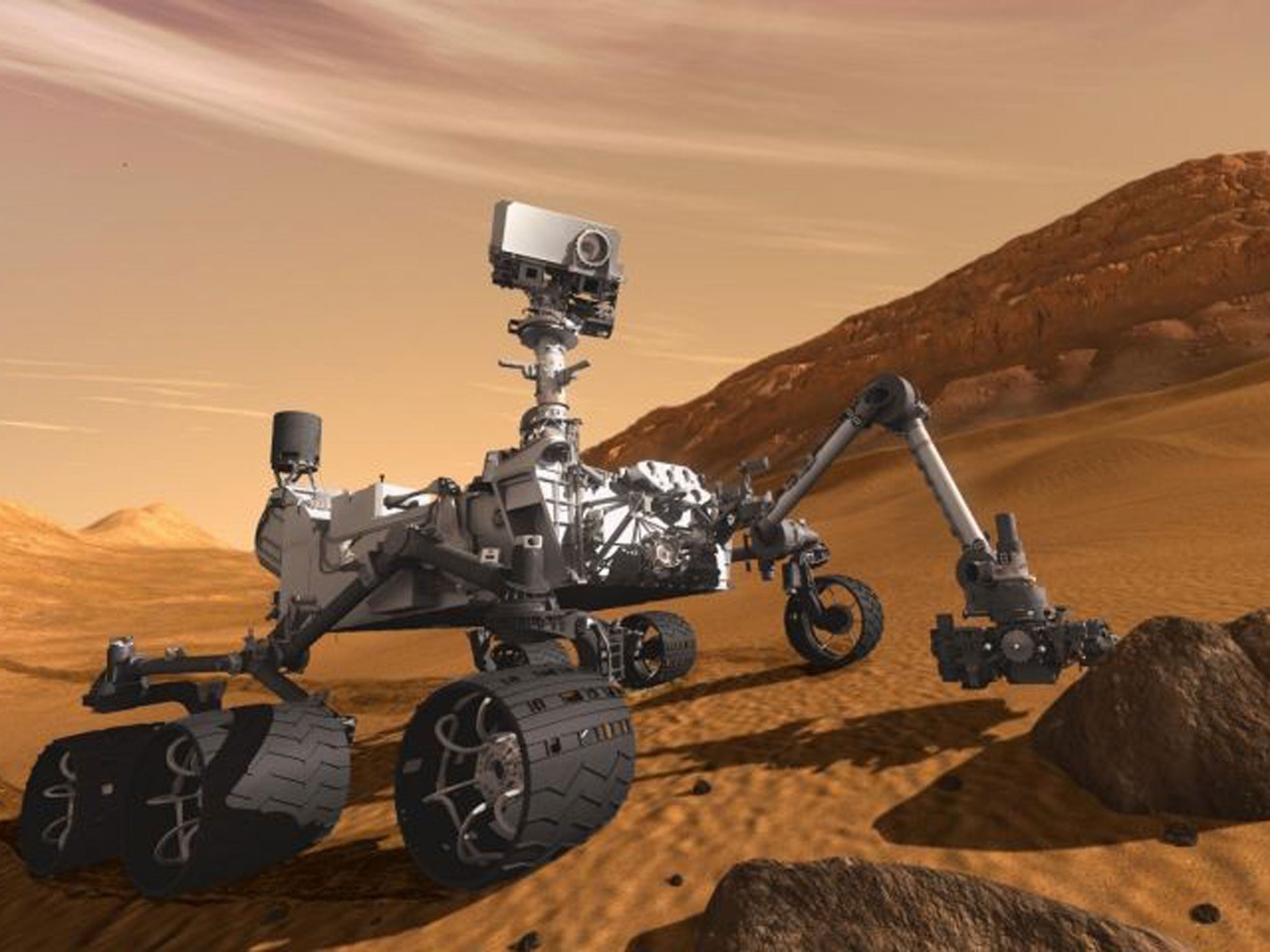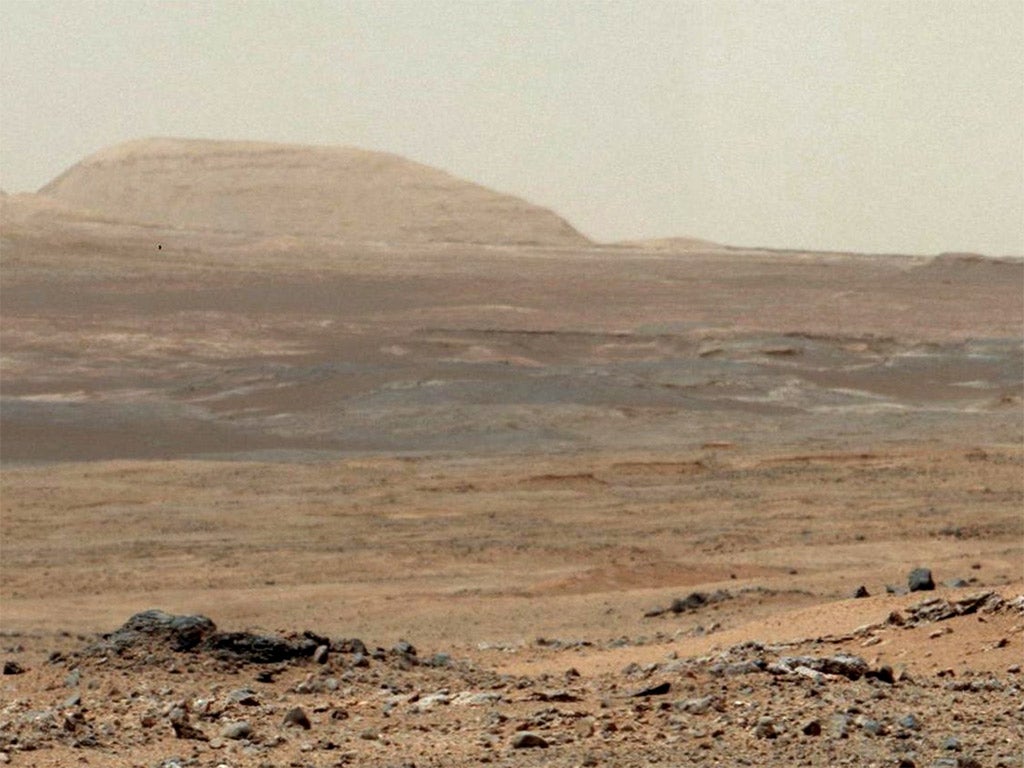There just might be life on Mars....Nasa Curiosity rover picks up mysterious methane 'burps' that could possibly be coming from alien organisms
Mars Curiosity rover picks up 'burps' of methane — which could be evidence of life on the planet

Your support helps us to tell the story
From reproductive rights to climate change to Big Tech, The Independent is on the ground when the story is developing. Whether it's investigating the financials of Elon Musk's pro-Trump PAC or producing our latest documentary, 'The A Word', which shines a light on the American women fighting for reproductive rights, we know how important it is to parse out the facts from the messaging.
At such a critical moment in US history, we need reporters on the ground. Your donation allows us to keep sending journalists to speak to both sides of the story.
The Independent is trusted by Americans across the entire political spectrum. And unlike many other quality news outlets, we choose not to lock Americans out of our reporting and analysis with paywalls. We believe quality journalism should be available to everyone, paid for by those who can afford it.
Your support makes all the difference.Evidence of life on Mars could have been found by Nasa's Curiosity Rover.
Mysterious spikes of methane that cannot easily be explained by geology or other theories have been found by an instrument on the robot, which landed on the planet in 2012. Scientists can’t be sure what is causing the spikes, but it is possible that it could be very small, bacteria-like living organisms.
If the gas is coming from living microbes then it would mark one of the biggest discoveries in history. On Earth, 95% of methane comes from microbial organisms, but there are many non-biological processes that can also generate the gas.
Scientists have said that the rover now has to test and re-test the possibility of life, ahead of an unmanned mission in 2020 that would look for the source of the methane.
The European Space Agency’s ExoMars mission could also provide extra clues. In 2019 it will land a 300kg rover on Mars in 2019, equipped with a two-metre drill and extra equipment for investigating signs of life – although the European robot may be unable to reach the same place on the planet as the area currently being explored by Curiosity.
Previous satellite observations have detected unusual plumes of methane on the planet, but none as extraordinary as the sudden "venting" measured by Curiosity at the 96-mile wide Gale Crater, where evidence suggests water once flowed billions of years ago.
The laboratory onboard the rover has been sniffing methane in the atmosphere a dozen times in the last 12 months. In late 2013 and early 2014, the amount of methane flared up, and then receded.
At a press conference yesterday at the American Geophysical Union's convention in San Francisco, Nasa scientists said that besides living microbes, other possible explanations for the methane include the Sun's rays degrading organic material left behind by meteors.
But that explanation, they added, still relies on the original material being deposited by an object that would have measured several metres across and left a large crater - no sign of which was visible.
The scientists said other theories, such as volcanic deposits trapped in ice called clathrates, were ruled out by the short time-scale of the spikes.
It found a low background level of methane that spiked by over 10 times in a period of 60 Martian days.
In four sequential measurements, Curiosity showed the methane level soaring from about 0.69 parts per billion by volume (ppbv) to 7.2 ppbv. The spikes came within 200-300 meters of each other. By the time Curiosity had travelled a further kilometre, the higher methane levels had disappeared.
Dr Chris Webster, of Nasa's Jet Propulsion Laboratory in Pasadena, California, said: "Strictly speaking, our observations are evidence for methane production on Mars, and in themselves cannot directly provide evidence of microbial life.

"However, from our positive detection of methane on Mars, we cannot rule out the possibility that both the low background level and the high methane values originate in part from microbial activity.”
He said if any more spikes were found, the team would try to look for a particular isotope - or atomic variant - of carbon in the methane that would be an indicator of biological activity.
"At this time,” added Dr Webster, “We have no idea what we will see in the future, or if we will ever see high values again."
Another discovery by Curiosity was that of water bound in the fine-grained soil within the Gale crater, which was formed by a massive meteor strike about 3.5 billion years ago.
Each cubic foot of Martian soil was found to contain around two pints of water, not freely accessible but attached to minerals.
Rover is now about to start climbing Mount Sharp, an 18,000ft-high mountain at the centre of the Gale Crater, and scientists hope that its sedimentary layers will provide tantalising snapshots of Martian history.
Join our commenting forum
Join thought-provoking conversations, follow other Independent readers and see their replies
Comments